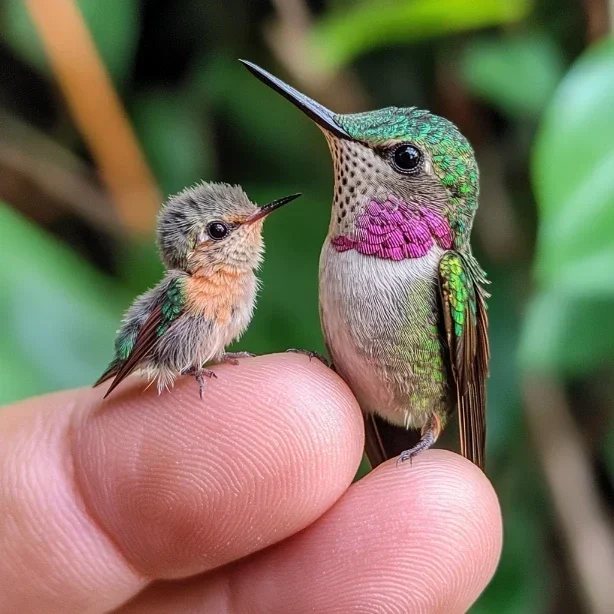(Or: How Nature’s Smallest Birds Navigate Big Social Challenges)
While often portrayed as solitary creatures, hummingbirds engage in surprisingly sophisticated social interactions that would impress even the most dedicated sociologist. From elaborate courtship rituals to complex territorial negotiations, these diminutive birds demonstrate social behaviors that challenge our understanding of avian intelligence.
The Social Network
Contrary to popular belief, hummingbirds maintain intricate social relationships beyond simple territorial disputes. They recognize individual birds, remember past interactions, and adjust their behavior based on previous experiences. Think of it as a tiny avian social media network, where each bird maintains a mental database of friends, rivals, and potential mates.
Key social capabilities include:
- Individual recognition of dozens of other birds
- Memory of past interactions spanning seasons
- Hierarchical understanding within local populations
- Complex communication through vocalizations and displays
The Territory Game
Territorial behavior in hummingbirds goes far beyond simple aggression. These birds negotiate sophisticated resource access negotiations, sometimes developing time-sharing arrangements at premium feeding sites. They demonstrate remarkable flexibility in their territorial strategies, adapting to changing conditions and competitor behaviors.
Consider how a single feeding territory might be divided:
- Primary owner maintains core hours
- Subordinate birds access during off-peak times
- Temporary alliances form during abundance
- Hierarchies shift based on resource availability
Courtship Complexity
The courtship behaviors of hummingbirds represent some of nature’s most elaborate displays. Males perform intricate aerial maneuvers that combine speed, precision, and artistic flair. These displays aren’t just shows of strength – they communicate complex information about genetic fitness, territorial quality, and individual capability.
The dance involves multiple components:
- Precise altitude climbs and dives
- Synchronized sound production
- Strategic color displays
- Carefully choreographed flight patterns
The Communication Code
Hummingbirds maintain sophisticated communication systems that include both vocal and visual signals. While often too high-pitched for human ears to fully appreciate, their vocalizations convey specific messages about territory, mating availability, and resource location.
Communication methods include:
- High-frequency vocalizations
- Display flights
- Posture changes
- Threat displays
- Cooperative signals
Female Social Structures
While male hummingbirds often get attention for their flashy displays, females maintain their own complex social networks. They remember reliable feeding territories, share information about resource quality, and sometimes form loose associations during breeding seasons.
Female social behaviors include:
- Resource sharing information
- Nesting territory respect
- Cooperative defense against predators
- Strategic feeding alliances
The Learning Process
Young hummingbirds must quickly master complex social rules to survive. They learn through observation and experience, developing sophisticated understanding of local social dynamics within their first few months of life.
Social learning includes:
- Territory boundary recognition
- Hierarchy understanding
- Communication signal interpretation
- Resource sharing protocols
Conflict Resolution
Perhaps most surprisingly, hummingbirds often resolve conflicts without resorting to physical confrontation. They employ a range of strategies to settle disputes over resources, demonstrating remarkable sophistication in their approach to conflict management.
Resolution techniques include:
- Display flights without contact
- Gradual territory adjustments
- Time-sharing arrangements
- Strategic retreat and return
Group Dynamics
During migration or at abundant food sources, hummingbirds sometimes form temporary feeding aggregations that require complex social navigation. These gatherings operate under sophisticated social rules that help maintain order despite high population density.
Cross-Species Interactions
Hummingbirds don’t limit their social intelligence to interactions with their own species. They develop complex relationships with other bird species, insects, and even humans, demonstrating remarkable adaptability in their social strategies.
Urban Adaptation
In human-modified environments, hummingbirds show impressive social flexibility, developing new strategies to handle novel social situations created by feeders, gardens, and urban development.
Conclusion: Social Sophistication in Miniature
The social behaviors of hummingbirds demonstrate that complex intelligence comes in all sizes. These tiny birds maintain social lives as intricate as many larger animals, challenging our assumptions about brain size and social capability.
Remember: When you observe hummingbirds interacting around your garden or feeders, you’re witnessing sophisticated social negotiations that represent millions of years of behavioral evolution.


